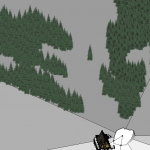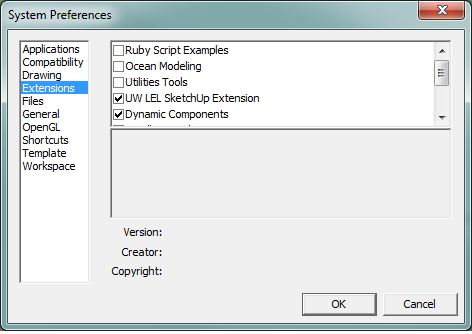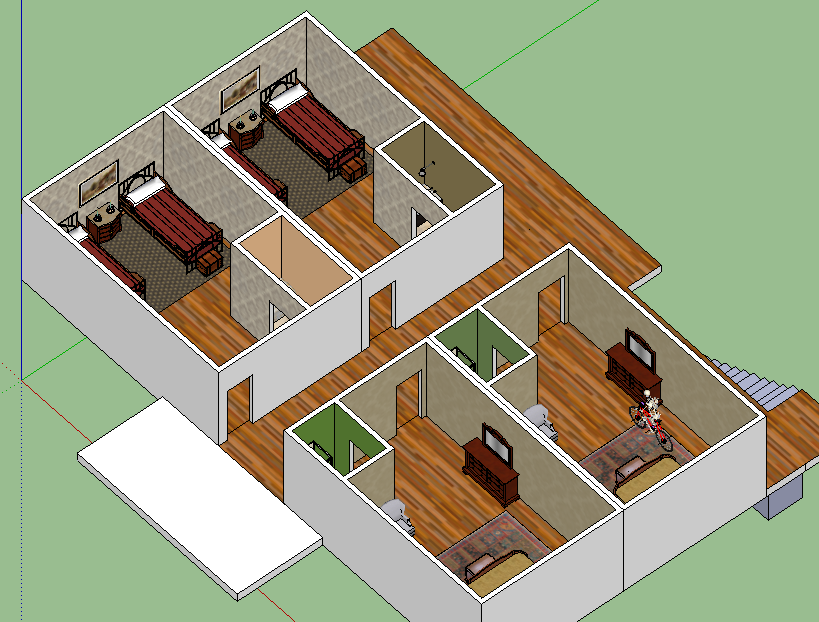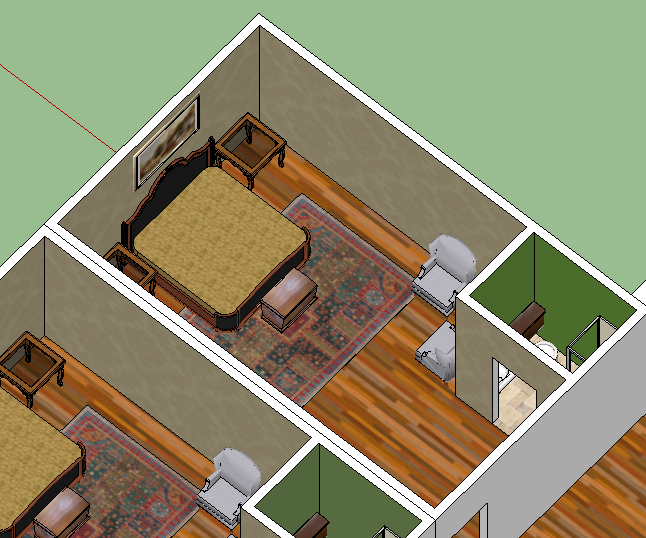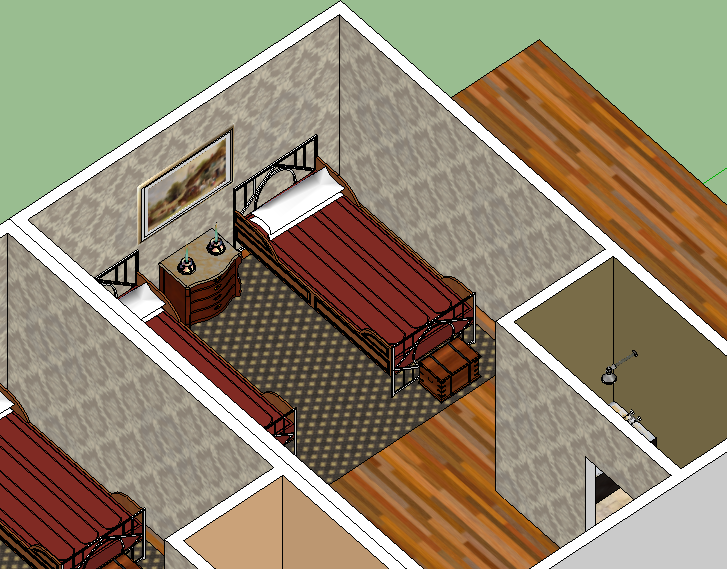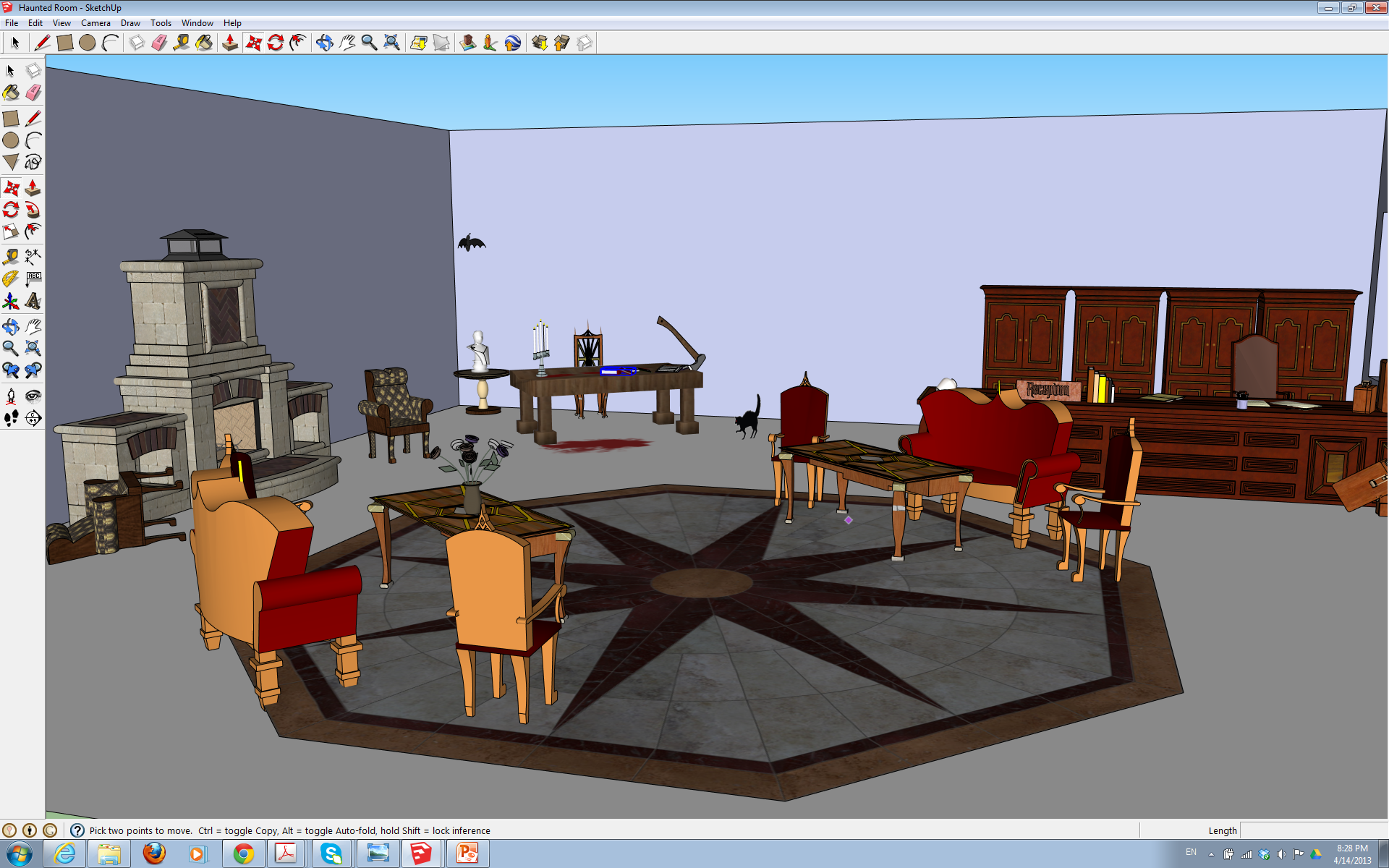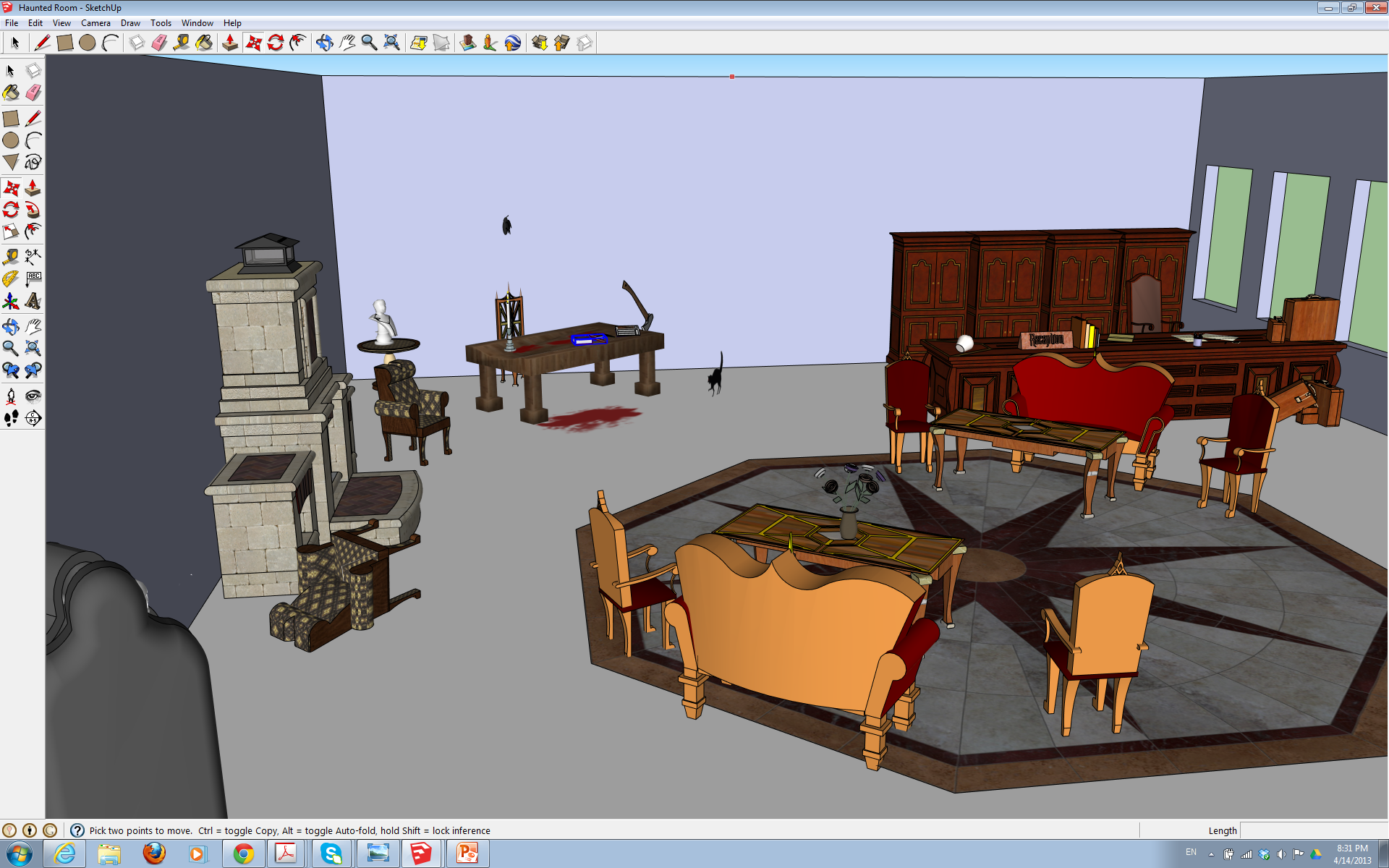We will discuss the reading and talk about projects.
Update #1
This week we began modeling the geometry of the mountain and run #1. We also found a Ski Lift model that we will further customize to use in our project, and found a cabin to use as a place holder until we have time to model our own. Moving forward, I plan to continue modeling run #2, and start modeling the cabin at the top of the mountain. In addition, we are trying to explore ways to make the snow on the ground look fluffy and realistic, as opposed to a flat, painted on surface.
During class on thursday, we created a very basic shape to explore movement up and down an inclined ramp on the LEL screen to test basic movement properties as they will be applied to our mountain scenario. We hope to continue to explore this, and continue working on copying portions of the programing code that we also started working on.
How to Install the New Sketchup Plugin
Step 1
First install GIT on your machine. You can find the appropriate version here if you don’t have it on your computer
http://pages.cs.wisc.edu/~kponto/ds501/Git-1.7.11-preview20120710.exe
When you install GIT, be sure to choose
when the this option appears.
Step 2
Install the sketchup plugin
http://pages.cs.wisc.edu/~kponto/ds501/UWLEL_SketchupPlugin.exe
Step 3
Enable the sketchup plugin
- Choose Windows >> Preferences
- Enable the plugin
Step 4
When you right click on an object, choose “LEL Properties”. You should see a dialogue that looks like this
Update #1
So far this week we decided on a lot of core concepts to be included in the project. Below is a list of the features each person included.
Lauren: I’m working on the pyramid and terminal model. I should have the structures done by Tuesday, although I probably won’t have materials on.
CC: I have done modeling the building which is having the museum. I will continue to add materials and work with the interior of the museum this week. In addition, i will finish an outdoor environment before this Tuesday.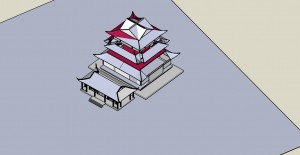
Kevin: I’m working on getting familiar with the Kinect SDK for voice today.
Nick: I have created nice outlines for puzzles in the Egypt and Temple levels. They’ll probably have to be refined a bit with the models of the structures, but we’ll handle that when it gets there. I’ll do the museum as soon as I have a nice list of paintings to go on.
The Jasper: Week 2 Update
Our haunted hotel is slowly emerging from the ether. New this week:
Natalie: I have begun the design of the bedrooms, and decided to go with just two different layouts because of time. I am trying to implement an old, dingy feeling with the use of multiple patterns in fabric, wallpaper, and rugs. I also found some old toilets and a very dirty looking tub that I used to go along with this idea. I still have a ways to go on the model to make it a bit more freaky and scary, but I have a good start.
I also found this skeleton on a bicycle in the 3D Sketchup Warehouse (weird I know), but I thought it would be cool if the skeleton could ride the bike towards the user when they open the door to the bedroom, do you think this is possible? If anything the group could just move forward toward the door, it wouldn’t have to look like the skeleton was peddling or anything.
Jerry H: With trouble accessing the lab via VPN, I have started writing up an overall design with the game engine.
- A singleton class HouseEngine keeps track of overall game status (time elapsed; array of Ghost objects; number of ghosts caught; other stats related to game playing).
- A Paranormal class serves as the base class to all instances of ghosts/monsters/creepy-crawlies to provide similar behavior.
- At initialization, Paranormal class stores the OBJ file of the paranormal before and after capture.
- For animation during capture, Paranormal class will either play an FBX file or perform animation programmatically. For paranormals that use programmatic animation, I may create a subclass to provide animation. E.g. A Ghost class provides the animation of a bedsheet-like ghost enlarging from its original position toward the user.
- Paranormal class will detect user entity by implementing OnProximity().
- Paranormal class will also keep track of whether it has already been caught.
- Programmers: Your input appreciated here… To simplify the interactive process, I may consider the ghost and the object with which it is associated to be modeled in the same obj and handled logically within the same Paranormal class. For example, a Paranormal instance may hold both a ghost and the bed it’s hiding under; this way instead of having a separate class to handle the bed’s interaction/view state, it’ll just be one object to code.
- A Door class to provide interaction of opening and closing.
- Implement OnProximity() to detect the user entity, and automatically plays the open animation when user approaches.
To do for this week: gain access through VPN; flesh out pseudocode.
Hasti: I have done modeling the lobby so far and will continue to add more materials, wall paper, fire and details.
Jerry C: This week, I did some modelings of our restaurant. I will comtinue to do more about materials, details and ghosts.
Reading 10 is now due Monday
Due to the latency of the posting of the reading, I have extended the deadline for Reading 10 by 24 hours. I will also be reorganizing the site this weekend so that it will hopefully be better structured.
Reading 10
For class 4/16/13
Post Comments by 11:59 PM on Monday 4/15/13
http://www.life-slc.org/docs/Bailenson_etal-immersiveVR.pdf
- In the
backgroundIntroduction section (pp. 103-111), choose a study that sounds interesting, odd, or strange to you. Describe why. - Do you think the results of these experiments would be different in a CAVE environment? Why or why not.
- If you were going to do another experiment in this series, what would you want to study? Briefly describe.
- Based on the results of these experiments, how would you design a virtual learning environment?
- Find a topic that you interesting, dubious, or curious and explain why.
How to connect to the WID VPN
- Get an account and password from WID IT (this should be emailed to you)
- Get a VPN client (e.g. Cisco AnyConnect)
- Connect to vpn.wid.wisc.edu
- Enter your username and password
LEL CAVE Training Guide
LEL CAVE Training Guide
http://blogs.discovery.wisc.edu/ds501/files/2013/02/Official-LEL-CAVE-Training-Guide.pdf
This document gives information on how to turn on the system, projects, wands, and other various components.
Virtual Lab API
Virtual Lab API
http://blogs.discovery.wisc.edu/ds501/files/2013/02/VRScript.pdf
This document provides details about the Virtual Lab scripting language.



